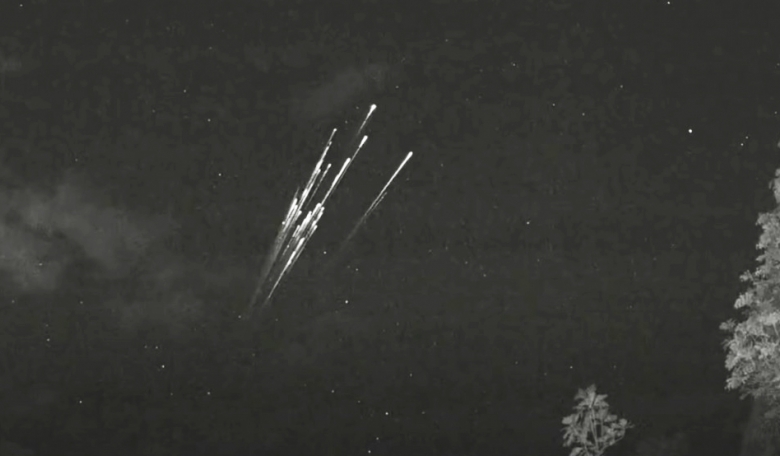The loss of around 40 of the 49 Starlink satellites launched last week by SpaceX caused by an unexpected sting in the tail from a solar storm might also have been exacerbated by a design error or quality control issue.
Space analyst David Todd, of the UK-based satellite monitoring agency Seradata, suggested that such a large number of satellites falling out of the sky in one go raised a number of serious questions for SpaceX.
"The official company statement seems to imply that increased atmospheric drag from the solar event somehow resulted in the loss of control of these satellites,” he stated.
"Did they later fall into a spin while in safe mode? Their efficient electric thrusters may not have had enough thrust to give the spacecraft enough control authority to prevent this, or even cope with the increased drag itself.”
The satellites were launched into low-Earth orbit (LEO) on 3 February from the Kennedy Space Center in Florida by a Falcon 9 rocket but the majority are now burning up in Earth’s atmosphere instead of reaching their intended orbit.
Though the satellites were commanded to take cover from the storm by flying edge-on (like a sheet of paper), they failed to carry out the manoeuvres required to reach their required operating orbits.
“Unfortunately, the satellites deployed on Thursday were significantly impacted by a geomagnetic storm the following day,” SpaceX admitted in a statement issued a week later.
“These storms cause the atmosphere to warm and atmospheric density at our low deployment altitudes to increase. The speed and severity of the storm resulted in an “atmospheric drag” that was up to 50 percent higher than during previous launches,” it claimed.
Two days before the launch a Coronal Mass Ejection (CME) hit Earth's magnetic field, though it was not categorised as a major space weather event. In fact, according to the space weather website (spaceweather.com) the weak impact did not at first even spark any remarkable geomagnetic activity.
However, as Earth passed through the CME's wake, some sputtering G1-class geomagnetic storms developed and it was one of these minor storms that caught the Starlink satellites the day after their launch.
Geomagnetic storms heat Earth's upper atmosphere and it is thought that diaphanous tendrils of warming air literally reached up and ‘grabbed’ the Starlink satellites. SpaceX says onboard GPS devices detected atmospheric drag increasing up to 50 percent higher than during previous launches.
"Preliminary analysis show the increased drag at the low altitudes prevented the satellites from leaving safe-mode to begin orbit raising manoeuvres, and up to 40 of the satellites will reenter or already have reentered the Earth’s atmosphere, added SpaceX.
Geomagnetic storms are the result of interactions between solar wind - a stream of charged particles from the sun - and Earth’s magnetic field. SpaceX says that the deorbiting satellites pose “zero collision risk” with other satellites and by design are burnt up on atmospheric reentry - meaning no orbital debris is created and no satellite parts hit the ground.
The picture accompanying this article, from Sociedad de Astronomia del Caribe, is believed to have captured one of the reentries over Puerto Rico on 7 February.
David Todd described such a failure scenario as “highly unusual” because normally when such events are cited as the underlying cause of the sudden death of satellites, electrostatic discharges or single event upset events are much more common mechanisms. “Whatever the case, the real question is: why was it just these satellites that were affected?
“Most satellites use circuits and chips hardened against solar radiation and other electromagnetic disturbances, often using ‘Faraday Cages’ to protect their most vulnerable parts against electrostatic discharges, ” he stated.
“Do the Starlink v1.5 spacecraft design have these features? Or was it another generic design error or quality control-induced fault on the satellites which either did not allow for this increased drag, or allow their attempt to come out of safe mode?”
Todd surmised that if the thrusters needed the power generating solar array to be in a high drag position, the spacecraft may actually have been in a ‘Catch-22' situation: not enough thrust in a low drag configuration to counter the drag or climb to a safe orbit, but needed a too-high drag orientation to make the thrusters work.











